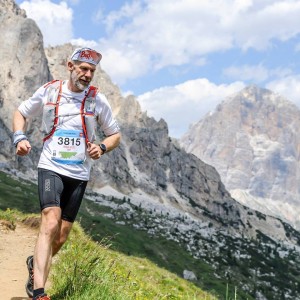Walking and running are seen to be one of the most basic aspects of human movement, something you do, or should do daily. Ironically, they are one of the most intricate movement patterns to explain in detail.
It’s often considered that people can inherently run with correct form. However, it’s amazing how many have poor mechanics, which in turn leads to all sorts of problems.
Many of these are a result of muscular imbalances (strength differences between muscles) and weaknesses. But often, it can be down to a lack of knowledge and conscious engagement of the correct form.
Note, I am assuming here that you have no underlying issues and that you also wear suitable footwear (poor footwear being a cause of many problems). In no way will this act as a gait analysis. I will simply be teaching you the guidelines of what is optimal when it comes to running form.
Every individual has their own distinct gait; it’s not uncommon to be able to spot a friend by the way they walk and run. Therefore, it is key that you work with your body and not against it. Just because a world record breaking marathon runner runs in a certain way, doesn’t necessarily mean you should mimic their style.
However, there is a consensus on the correct way to run and you will benefit from picking up on techniques from the best athletes and coaches, so don’t be afraid to learn and adapt your style. Remember though, if you have been running a certain way for many years, then changing your style can result in various structures becoming stressed, leading to injuries. So, take your time and implement changes gradually.
Good upper body posture should be maintained while running. However, your torso should be tilted forward slightly, driving your weight forward with your chest.
Your arms should be bent at 90 degrees or less with your hands in a relaxed fist. This will result in your rear hand coming in line with your hips or slightly higher, and your front arm coming up to your chest. Your arms should swing towards your midline (centre of your body). However, they should not cross your midline or punch forward as this can throw you off balance.
As your right leg strides forward, your left arm should swing forward. This not only keeps you balanced, but also creates a stretch diagonally across your front (from right shoulder to left hip), creating elastic energy that when released helps to propel your next stride (think of an elastic band recoiling).
The height at the front and back of the swing will be dependent on your speed. When sprinting, individuals will often bring their front hand up to their face, usually with an open hand (aerodynamic). However, when doing longer distances, more emphasis is placed on relaxation and balance rather than forward drive.
Foot strike, which refers to how and where your foot first strikes the ground, is often an aspect of running that acts as a real bone of contention.
· Heel strikers – Land on heel.
· Midfoot – Land on the middle of the foot.
· Forefoot – Land on the ball of the foot.
At a world class level, you will see athletes who use each of these styles and various studies show pros and cons for each. Therefore, some coaches argue that individuals should first choose the style that comes naturally to them.
However, the most biomechanically efficient way to strike the floor, is to land on the ground somewhere between midfoot to forefoot, and this has been emphasized by the growing number of individuals who choose more minimal footwear (little to no “heel to toe ramp” i.e. raised heel).
The human foot has been designed to run barefoot. Trainers self-evidently weren’t in existence when early humans were roaming the earth.
Therefore, the question is, if you take your trainers off, what is the most comfortable way to strike the floor, specifically when on harder surfaces?
The answer is on the mid to forefoot- try jumping up and down on the spot for a second and you will see how the best place to absorb impact is towards the front of the foot.
People could argue that early humans wouldn’t be running on concrete roads and pavements. But even so, heel striking would still be quite painful on most surfaces.
However, trainers are not only available to us, they provide cushioning that helps us to accommodate the many miles on the hard surfaces we potentially encounter daily. Ultimately foot strike is going to be affected by footwear, your running speed and the surfaces you are running on (uphill/downhill).
Therefore, I suggest you initially choose the style that feels natural for you. However, I recommend that if you are not already landing on the mid-forefoot, you should work towards doing so.
My golden rules for running:
· Maintain good upper body posture with a slight forward tilt of your torso.
· Bend your arms at 90 degrees or less, swinging them forward and back to maintain forward drive and balance. Your torso will naturally rotate slightly as you run, you don’t want to overemphasise this by allowing your arms to cross your midline.
· Breathe deeply using your diaphragm and try to regulate your breathing with your strides.
· Your striding foot should land directly under your knee. Too far forward and it will place excessive stress on your knee and hamstrings (muscles on the rear of upper leg), and ultimately slow you down (heel striking can encourage over striding).
· Take short, quick strides. The optimal cadence is generally considered to be 180 steps per minute or higher.
· Run smoothly, making a conscious effort to strike the floor softly. However, push up and off the floor behind you, propelling you forward. Aim to bring your rear shin above knee height.
Thanks for reading
Jay
Follow us on:
Facebook: www.facebook.com/5sfitnessuk
Twitter: www.twitter.com/5sfitness
Instagram: www.instagram.com/5s_fitness
YouTube: www.youtube.com/channel/UC66XVf9NZBO8j-V4or5d2Tg

